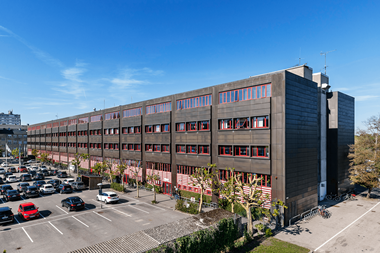Investors looking to second-tier German cities for extra yield should pay close attention to local economies and demographics to avoid taking on unwanted risk, according to Feri.
As investment opportunities in Germany’s top six cities become increasingly scarce, the German consultancy has recommended focusing on “B-Städte” (B cities) with diversified local industries, university populations and a high quality of life.
The report follows a similar analysis by Legal & General Property of cities in the UK where real estate investors are searching for higher yields outside London.
Manfred Binsfeld, author of the report and head of real estate research at Feri, noted that investors were turning their focus to less populated cities, but he warned that they would not necessarily benefit from positive yield movements.
“Investors have to improve their risk analysis so as not to mistake all high gross yields for a good investment opportunity,” he told IP Real Estate.
Yields in the top-20 cities identified by Feri had already come down, he added.
According to the study, the B cities with the highest yields at a similar risk level to that of most metropolis are Wolfsburg (9.47%), Ingolstadt (6,9%) und Paderborn (7,8%).
Low-risk A-cities like Munich or Stuttgart are only yielding just over 4% and almost 6% respectively.
The study was sponsored by German companies Wertgrund and Deutsche Invest Immobilien (DII).
Thomas Meyer, chairman of the board at residential investor Wertgrund, said the company invested in eight of these cities five years ago when places like Münster were still “a hidden opportunity”. He added: “Now we have to find the future top 20 cities.”
Frank Wojtalewicz, owner of DII, said cities like Wolfsburg, where German car producer VW has its headquarters, were only interesting for short-term investors.
“For long-term investors the undiversified economic influences and the lack of a real leisure factor in this city means an increased risk,” he noted.
Cities like Karlsruhe, Darmstadt, Münster, Dortmund, Leipzig, Dresden or Aachen on the other hand have more diversified economic structures, universities and mostly historic city centres – a sought after feature.
“In such locations we see good investment opportunities and a lower risk than in some A cities,” explained Wojtalewicz.
All three experts agreed that the government’s intended rental cap was the wrong answer to the problem of rising rents in certain cities and that only a subsidised building programme could ensure cheap living space for those in need.
The study identified Hamburg, Erlangen, Berlin, München, Münster, Mainz, Frankfurt/Main, Bonn, Freiburg/Breisgau and Stuttgart as the 10 most likely candidates for the rental cap out of 56 cities in total where this measure might be applied.
Meyer pointed out for active investors the measure would only have a minor influence on the yield as the first reletting after an extensive renovation is exempt from the rental cap as are existing rental levels.












